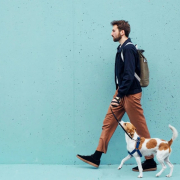Is the information provided by large language models valid in educating patients about adolescent idiopathic scoliosis? An evaluation of content, clarity, and empathy: The perspective of the European Spine Study Group
Siegmund Lang, Jacopo Vitale, Fabio Galbusera, Tamás Fekete, Louis Boissiere, Yann Philippe Charles, Altug Yucekul, Caglar Yilgor, Susana Núñez-Pereira, Sleiman Haddad , Alejandro Gomez-Rice, Jwalant Mehta, Javier Pizones, Ferran Pellisé, Ibrahim Obeid, Ahmet Alanay, Frank Kleinstück, Markus Loibl ; ESSG European Spine Study Group
Spine Deform. 2024 Nov 4. doi: 10.1007/s43390-024-00955-3. Online ahead of print
Abstract
Purpose: Large language models (LLM) have the potential to bridge knowledge gaps in patient education and enrich patient-surgeon interactions. This study evaluated three chatbots for delivering empathetic and precise adolescent idiopathic scoliosis (AIS) related information and management advice. Specifically, we assessed the accuracy, clarity, and relevance of the information provided, aiming to determine the effectiveness of LLMs in addressing common patient queries and enhancing their understanding of AIS.
Methods: We sourced 20 webpages for the top frequently asked questions (FAQs) about AIS and formulated 10 critical questions based on them. Three advanced LLMs-ChatGPT 3.5, ChatGPT 4.0, and Google Bard-were selected to answer these questions, with responses limited to 200 words. The LLMs’ responses were evaluated by a blinded group of experienced deformity surgeons (members of the European Spine Study Group) from seven European spine centers. A pre-established 4-level rating system from excellent to unsatisfactory was used with a further rating for clarity, comprehensiveness, and empathy on the 5-point Likert scale. If not rated ‘excellent’, the raters were asked to report the reasons for their decision for each question. Lastly, raters were asked for their opinion towards AI in healthcare in general in six questions.
Results: The responses among all LLMs were ‘excellent’ in 26% of responses, with ChatGPT-4.0 leading (39%), followed by Bard (17%). ChatGPT-4.0 was rated superior to Bard and ChatGPT 3.5 (p = 0.003). Discrepancies among raters were significant (p < 0.0001), questioning inter-rater reliability. No substantial differences were noted in answer distribution by question (p = 0.43). The answers on diagnosis (Q2) and causes (Q4) of AIS were top-rated. The most dissatisfaction was seen in the answers regarding definitions (Q1) and long-term results (Q7). Exhaustiveness, clarity, empathy, and length of the answers were positively rated (> 3.0 on 5.0) and did not demonstrate any differences among LLMs. However, GPT-3.5 struggled with language suitability and empathy, while Bard’s responses were overly detailed and less empathetic. Overall, raters found that 9% of answers were off-topic and 22% contained clear mistakes.
Conclusion: Our study offers crucial insights into the strengths and weaknesses of current LLMs in AIS patient and parent education, highlighting the promise of advancements like ChatGPT-4.o and Gemini alongside the need for continuous improvement in empathy, contextual understanding, and language appropriateness.
Keywords: Adolescent idiopathic scoliosis (AIS); Artificial intelligence (AI); Large language models (LLMs); Patient education; Spine surgery.

